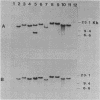Abstract
The suicide plasmid pSUP2021 was used to introduce Tn5 into the Pseudomonas solanacearum wild-type strain K60. We isolated eight avirulent mutants after screening 6,000 kanamycin-resistant transconjugants by inoculating eggplant (Solanum melongena L. cv. Black Beauty) and tobacco (Nicotiana tabacum L. cv. Bottom Special) seedlings. The Tn5-containing EcoRI fragments from the eight mutants were unique, suggesting that numerous genes specify virulence in this species. These EcoRI fragments were cloned into pBR322 or pUC12, and one of the clones, pKD810, was transformed into K60. All of the kanamycin-resistant, ampicillin-sensitive transformants were avirulent. Three randomly selected avirulent transformants were shown to carry the Tn5-containing fragment in place of the wild-type fragment and to exhibit the same hybridization pattern as the original KD810 mutant did. With pKD810 as a probe, we identified cosmids carrying the wild-type virulence genes by using a genomic library of K60 prepared in pLAFR3. Two of the homologous cosmids, pL810A and pL810C, when introduced into KD810 by transformation, restored virulence and normal growth of this mutant in tobacco. Altogether, these data indicate that the gene(s) interrupted by Tn5 insertion in KD810 is essential for the virulence of P. solanacearum. Further characterization of this gene is now being completed by subcloning, transposon mutagenesis, and complementation analysis.
Full text
PDF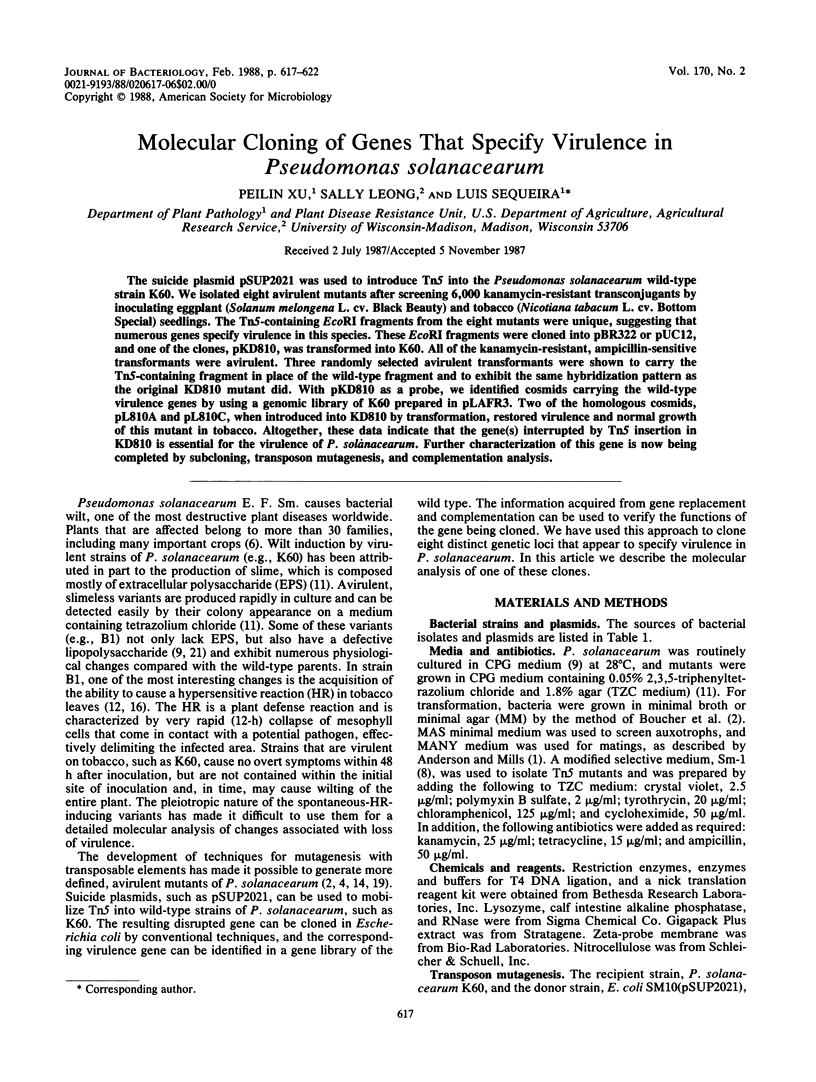
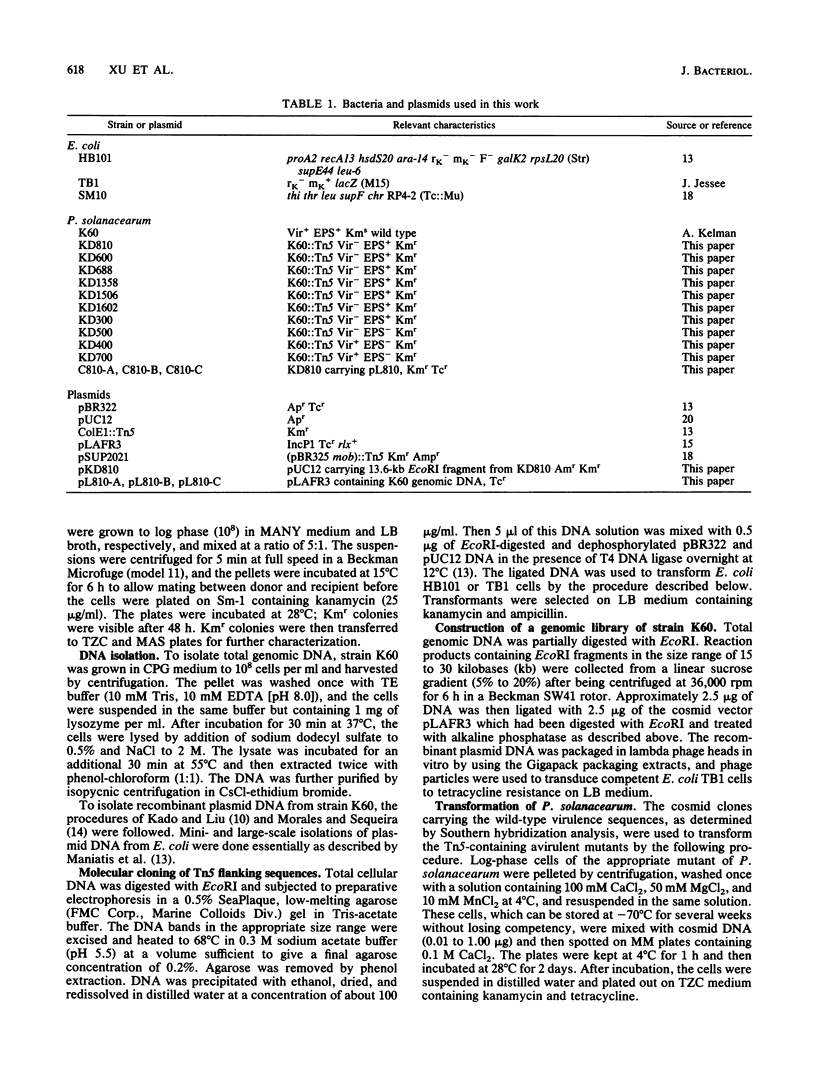
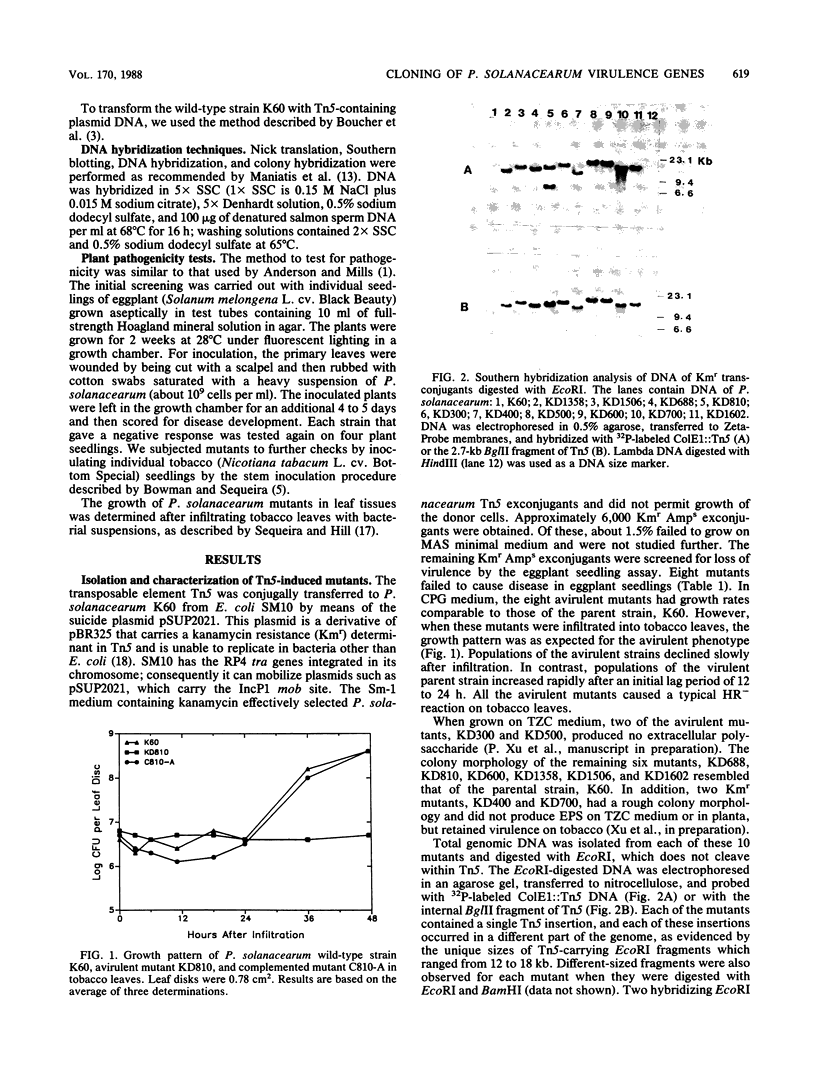
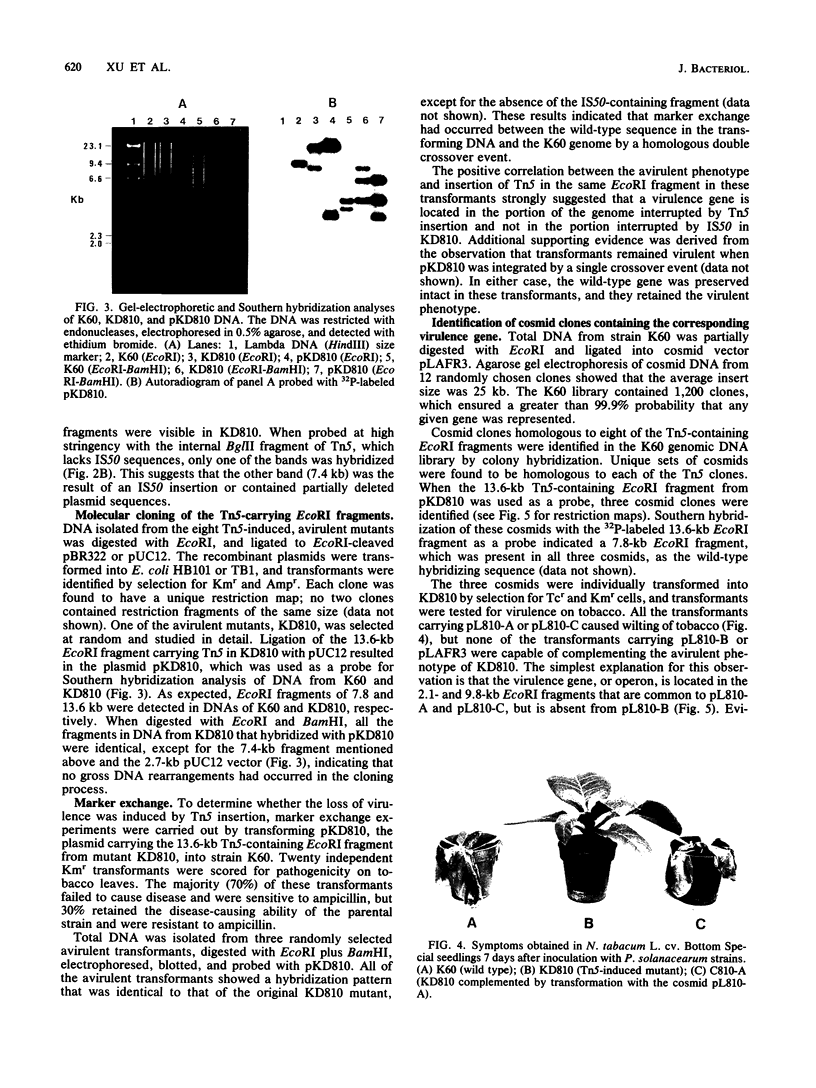
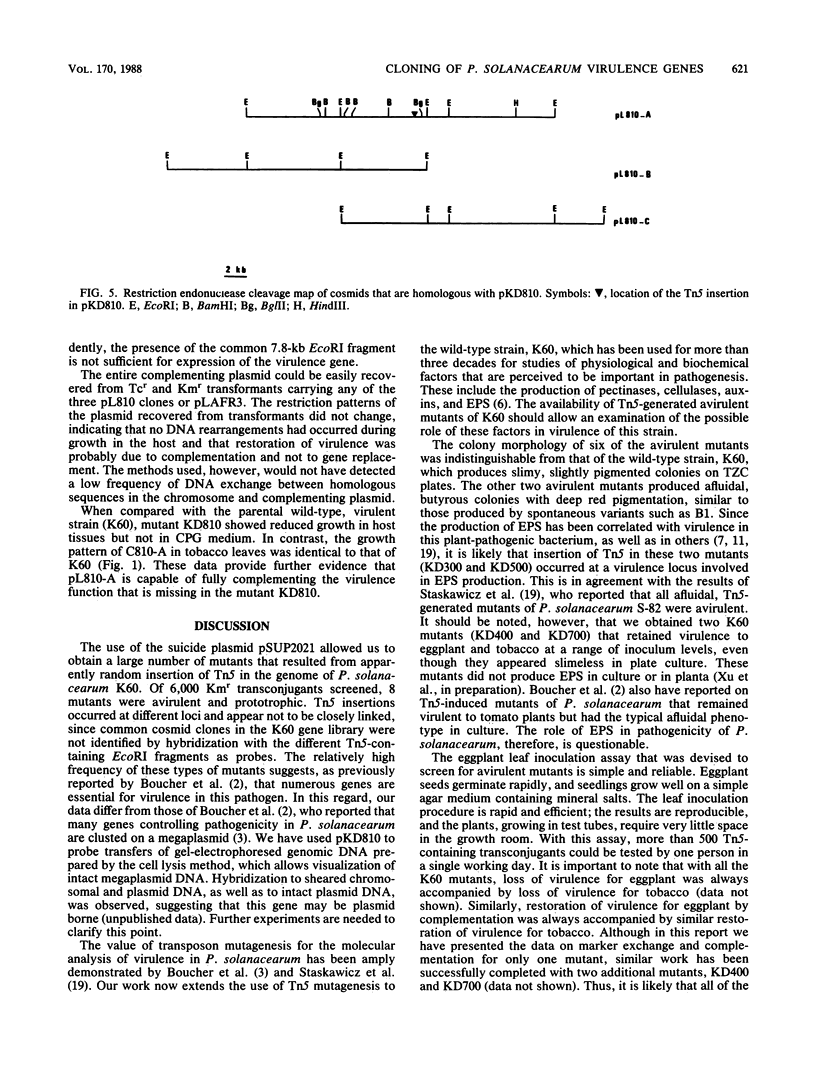
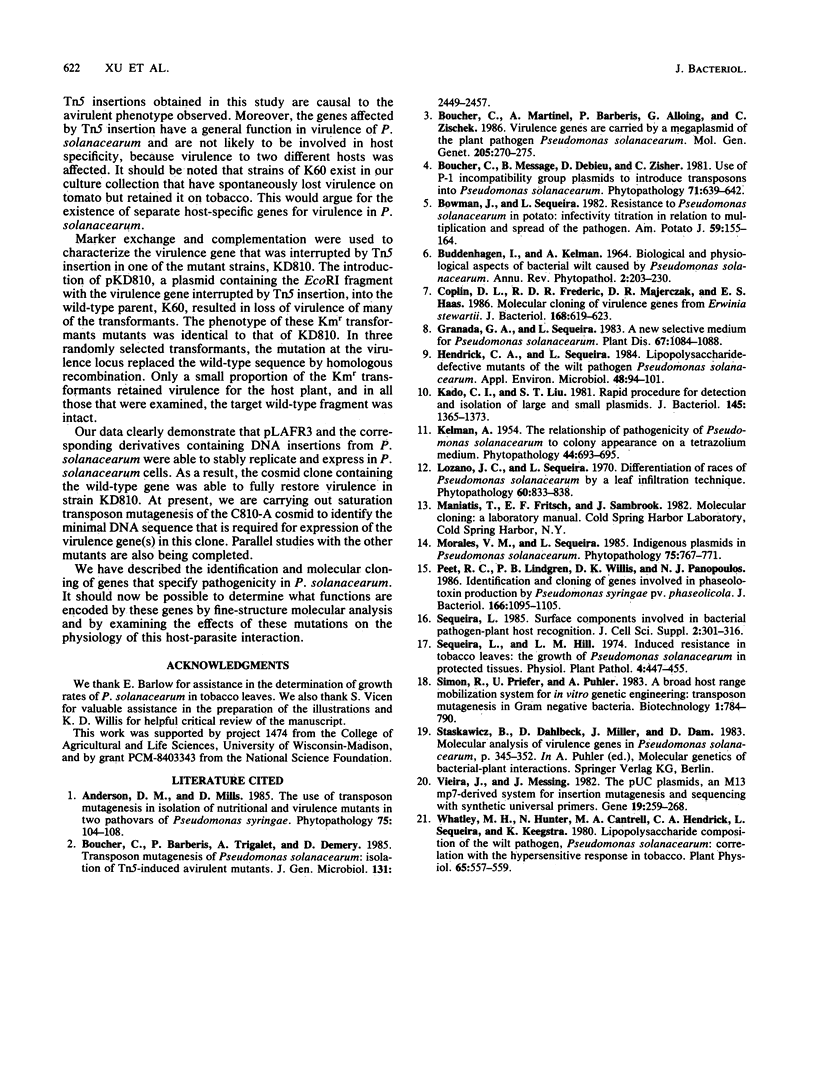
Images in this article
Selected References
These references are in PubMed. This may not be the complete list of references from this article.
- Coplin D. L., Frederick R. D., Majerczak D. R., Haas E. S. Molecular cloning of virulence genes from Erwinia stewartii. J Bacteriol. 1986 Nov;168(2):619–623. doi: 10.1128/jb.168.2.619-623.1986. [DOI] [PMC free article] [PubMed] [Google Scholar]
- Hendrick C. A., Sequeira L. Lipopolysaccharide-Defective Mutants of the Wilt Pathogen Pseudomonas solanacearum. Appl Environ Microbiol. 1984 Jul;48(1):94–101. doi: 10.1128/aem.48.1.94-101.1984. [DOI] [PMC free article] [PubMed] [Google Scholar]
- Kado C. I., Liu S. T. Rapid procedure for detection and isolation of large and small plasmids. J Bacteriol. 1981 Mar;145(3):1365–1373. doi: 10.1128/jb.145.3.1365-1373.1981. [DOI] [PMC free article] [PubMed] [Google Scholar]
- Peet R. C., Lindgren P. B., Willis D. K., Panopoulos N. J. Identification and cloning of genes involved in phaseolotoxin production by Pseudomonas syringae pv. "phaseolicola". J Bacteriol. 1986 Jun;166(3):1096–1105. doi: 10.1128/jb.166.3.1096-1105.1986. [DOI] [PMC free article] [PubMed] [Google Scholar]
- Sequeira L. Surface components involved in bacterial pathogen-plant host recognition. J Cell Sci Suppl. 1985;2:301–316. doi: 10.1242/jcs.1985.supplement_2.16. [DOI] [PubMed] [Google Scholar]
- Vieira J., Messing J. The pUC plasmids, an M13mp7-derived system for insertion mutagenesis and sequencing with synthetic universal primers. Gene. 1982 Oct;19(3):259–268. doi: 10.1016/0378-1119(82)90015-4. [DOI] [PubMed] [Google Scholar]
- Whatley M. H., Hunter N., Cantrell M. A., Hendrick C., Keegstra K., Sequeira L. Lipopolysaccharide Composition of the Wilt Pathogen, Pseudomonas solanacearum: CORRELATION WITH THE HYPERSENSITIVE RESPONSE IN TOBACCO. Plant Physiol. 1980 Mar;65(3):557–559. doi: 10.1104/pp.65.3.557. [DOI] [PMC free article] [PubMed] [Google Scholar]



